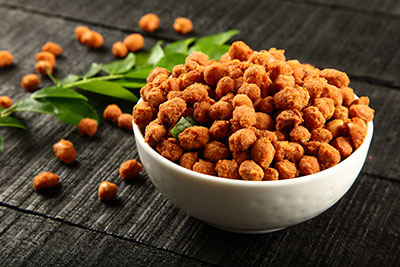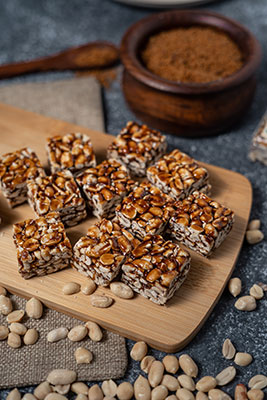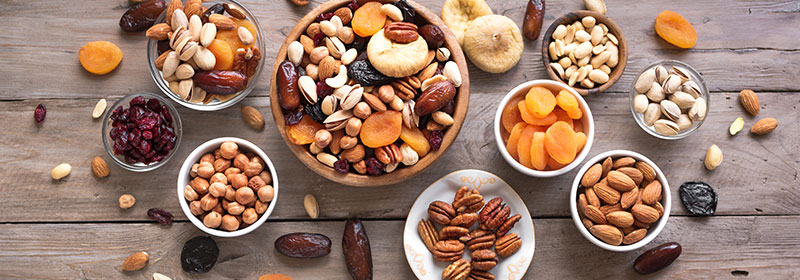Mind It
Mindful eating with nutritionally-fortified snacks, including vegan and plant-based offerings, is a phenomenon that is taking the world of food by storm

Mindful eating is an ancient practice. In 2016, in an article in Harvard Health Publishing, it was hailed as the way to “set the stage for a lifetime of healthy eating”. Since then, worldwide, it has remained on the fringes of food trends—coveted but not pursued. Until in 2023, when it has taken the world by storm, emerging as one of the top ten food trends.
Mindful eating is about making conscious food choices and being present and aware while eating. For most of us today, more than half the time of about the three hours (that experts say we spent in eating per day), we spend doing something else too—we could be working or driving, reading, watching television, or fiddling with our smart devices. We are never fully aware of what we are eating; and this mindless eating—lack of awareness of the food we are consuming—is what is contributing to obesity and other health issues. Many of us cannot recall everything we ate, let alone the sensation of eating it.
health conscious
Mindful eating yields a healthier relationship with food and has myriad health benefits. It helps us develop a deeper connection with our food. Even as we focus on the present moment, calmly accepting our feelings, thoughts, and bodily sensations, we feel a sense of gratitude and understanding of the nourishment it provides. And in India, where food is often associated with emotions, celebrations, and social gatherings, practicing mindfulness can help us make healthier choices and foster a positive relationship with food.
While ideal mindful-eating food choices are centered on fruits, vegetables, whole grains, seeds, nuts, the technique can be applied to burgers and fries as well. When you pay attention to the food you eat, you will indulge in them less often. In essence, mindful eating means being fully attentive to your food — as you buy, prepare, serve, and consume it.

fortified snacking

In India, where the food culture is diverse and vibrant, and snacking plays a significant role in daily routines, mindful eating is today finding a happy place. And, fortified snacks are a prominent expression of this growing trend.
True, snacking in India has always been quite a thing, with a wide array of snacks donning shelves and street corners. Even at home, households have taken pride in making and stocking traditional homemade treats. Many of these conventional snacks, however, have lacked essential nutrients, making them nutritionally deficient.
Today, healthy snacking habits are no longer in the realm of the ‘not-possible’. Snacks have been re-invented in a number of avatars to suit varied demographic and dietary requirements. Consumers gravitating towards options that require the least distance between pan and plate and strike high notes of flavour.
A variety of fortified snacks have found their way to shelves in local markets, supermarkets, and online platforms—making it easier for us to incorporate them into our daily routines. Since, many of them strike a balance with traditional flavours as well, they are being picked up even by food traditionalists.
Enriched with essential vitamins, minerals, proteins, and dietary fibres, they are an innovative solution for addressing nutrient deficiencies. For instance, fortified whole grain snacks can provide vital nutrients like iron, folic acid, and B vitamins. Similarly, snacks fortified with calcium can contribute to bone health, while those fortified with antioxidants can support overall well-being.
Protein bars are often fortified with additional protein to support muscle recovery and satiety. Snack mixes that include a variety of nuts and seeds are fortified with additional vitamins and minerals. Some mixes also contain dried fruits or superfood ingredients. Granola bars are commonly fortified with fibre and can include additional nutrients like vitamins, minerals, and antioxidants. Certain brands of veggie or fruit chips have added nutrients and there are also yogurt cups or cheese sticks that are fortified with probiotics for gut health.
The word of caution here though is that it is important to read labels and ingredients to understand what nutrients have been added and whether they align with dietary needs and preferences.

the vegan way
Today many have even introduced vegan and plant-based snacking into their lifestyles, choosing snacks primarily made from plant-based ingredients. Delicious and nutritious, they range from fresh fruits to veggie sticks (tastes best with hummus), trail mixes such as a mix of nuts (almonds, walnuts, or cashews), seeds (pumpkin or sunflower), and dried fruits (raisins, cranberries, or apricots). You could also add in some vegan dark chocolate or coconut flakes for extra flavour.
Roast chickpeas with olive oil and spices such as paprika, cumin, or garlic powder also make a protein-rich and crunchy snack. As do vegan energy balls using a combination of dates, nuts, seeds, and flavours like cocoa powder or seaweed snacks that are low in calories and high in minerals or even whole grain crackers with plant-based cheese.
making a routine

Incorporating mindful eating into snacking involves cultivating awareness and intentionality. By paying attention to hunger and fullness cues, we can avoid mindless snacking. Engaging all the senses while consuming snacks—appreciating flavours, textures, and aromas—can enhance overall experience derived from eating. Also, savouring each bite, chewing slowly, and being present in the moment can help develop a deeper appreciation for food and its impact on well-being. It is a promising way to bridge the gap between traditional snacking and improved nutrition.
Adopting mindful eating may take more than a few adjustments in the way you approach meals and snacks. But once you set the goal, the path will find its way.




